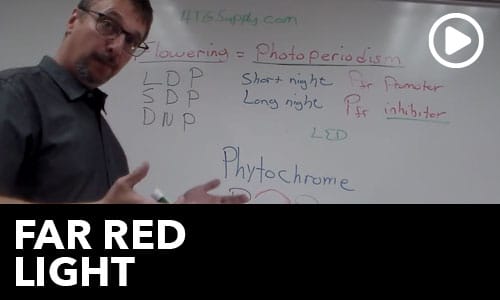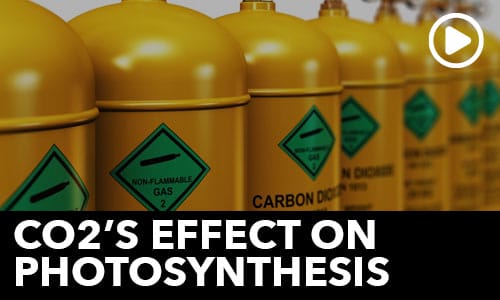Transcription:
In this video like to talk to you about flowering and the effect of infrared lights on plant flower. Now in flowering in biology that term is called photoperiodism different plants will flower at different times we have what are called long day plants these are plants that flower in the days are long. Now it turns out is actually the darkness that encourages flowering so better term for these would be short night plants. Other plants are called short day plants and again the better terms of this would be long night plants these are plants that flower in the spring and fall with the night skin long there are still other plants that are called day-neutral plants. These are plants like tomatoes and corn they you can’t really alter their flowering time they flower when there are certain size and that’s just how it goes.
Now we talk about long day and short day plants we want to understand how this works we have to understand a molecule called cytochrome. Now phytochrome is a protein and it’s a pigment it absorbs light energy it has nothing to do with photosynthesis phytochrome sits in two forms there’s what’s called phytochrome red and there is phytochrome far red and it is the ratio of these two forms that determines flower. Now when plants have red light that causes the phytochrome red be turned into phytochrome far red and when plants are in the dark so phytochrome far red will be converted back into phytochrome red and it is the ratio of these two molecules that determine flower. Now in long day plants phytochrome far red is a promoter of flowering it will promote flowering and this makes sense during the summer when the days are longer and there’s less dark there’ll be more phytochrome red and so plants will plow now it’s the opposite in short day plant here phytochrome far red is an inhibitor so it inhibits or prevents flower and this is why these plants tend to flower in the spring or fall as the nice get longer and longer there’s more dark which means are going to be less phytochrome far red and then the plants begin to flower. Now what’s interesting is because of new technology we can create leds that have a very specific wavelength of light energy and it also turns out that when you give plants infrared light or far red lights that also causes phytochrome far red to be turned back into phytochrome de red and since this is an inhibitor in short day plants that means by giving your plants a little bit of infrared light maybe right before those dark cycle that would be like that’s about 732 740 nanometers that that will destroy some of the phytochrome far red. That will encourage your plants to flower faster so I wouldn’t say maybe 5 to 10 minutes of infrared light before you start your night cycle and see what that does to your flower. You can keep trying to give a little bit more but you have to be careful if you give plants too much infrared or far red light and you get rid of too much phytochrome far red that might actually stress them out they might think that they’re almost at the end of the growing season. They have to hurry up and flower and get a very poor flowering response so if you’re growing a short-day plant plants the flower in the spring or the fall you could get an LED and emits infrared light and by applying a few minutes of infrared light to your plants right before the dark cycle you’re going to lower the amount of phytochrome far red that’s inhibiting flowering so when you get rid of the phytochrome far red your plants will flower faster and better. If you have any questions about plant flowering or any biology questions at all please feel free to send me an email at [email protected]. Good Growing.



